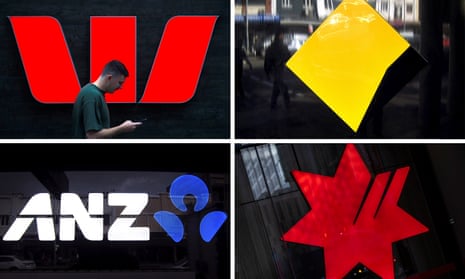There is a growing gulf between the climate policies of Australia’s big banks, with some pledging to severely limit future financing for fossil fuel projects, while others have left the door open, according to an analysis of updated lending policies.
Part of the discrepancy lies in the banks’ approach to arranging bonds, which are used by companies to access financing along with, and sometimes instead of, a direct loan.
When companies issue bonds, they receive money from investors in exchange for periodic interest payments and the return of the initial capital at a later date. In short, investors become lenders.
Updated policies show that Commonwealth Bank and Westpac have restrictions on facilitating bonds for fossil fuel clients in line with their hurdles imposed for direct finance.
Their fossil fuel clients will need credible plans to cut all emissions, including from the end-use of their coal, oil and gas, from different dates in 2025 to have the banks provide loans or be involved in facilitating bonds.
The other two major retail banks, NAB and ANZ, have less developed bond policies, according to climate groups.
Kyle Robertson, a banks campaigner at the environmental activist group Market Forces, said coal companies had turned to bonds to raise money after direct funding avenues started to dry up.
“We’ve seen a pivot towards bonds, and coal companies actually get two-and-a-half times more money from bonds than from traditional lending, so to have no policy on that is just a massive gap,” Robertson said.
NAB will not offer traditional lending to fossil fuel companies without credible plans to cut all emissions, in line with the landmark Paris agreement, from late 2025, according to its climate policies.
Connie Sokaris, NAB’s executive for corporate finance, said the bank’s climate policies would inform its bond facilitation decisions. “The most significant impact NAB can have on emissions reduction is through the finance we provide,” Sokaris said.
“NAB reviews all applications for finance from corporate and institutional customers on a case-by case basis and that includes (for the fossil fuel sector) considering climate-related matters for lending and capital markets activity – including bond facilitation – to ensure the finance we provide or facilitate aligns with our policy commitments.”
ANZ is reducing its overall exposure to oil and gas companies, although its climate policies don’t require fossil fuel companies to take into account emissions generated from the use of their coal, oil and gas, according to Market Forces and the Australian Conservation Foundation.
Jonathan Moylan, corporate campaigner at the ACF, said ANZ’s policies lag behind its banking peers.
“ANZ stands out as the laggard bank because it is ignoring the climate impacts of oil and gas after it is exported and burnt overseas, despite the fact that fossil fuels damage Australia’s climate regardless of where they are burnt,” said Moylan.
Some resources and energy companies have shied away from tackling the emissions generated by their customers – known as scope 3 emissions – even though the bulk of emissions are produced when the fossil fuels are used, rather than extracted.
after newsletter promotion
An ANZ spokesperson said the bank would reduce exposure or exit relationships with oil and gas customers that don’t meet its climate expectations by the end of 2025, which includes disclosing scope 3 targets and plans.
The spokesperson said climate policies were taking into account in bond facilitation decisions. “These type of activities are considered under our general credit approval process, which is rigorous and incorporates consideration of social and environmental issues,” the spokesperson said.
The four big banks have all added fossil fuel restrictions to their policies over the past several weeks, as 2023 shapes up to be the hottest year on record.
The Reserve Bank has noted that there are economic risks that accompany hotter temperatures and more extreme weather, with business activity disrupted, property damaged and lower productivity growth.
Dr Arjuna Dibley, head of the sustainable finance hub at the University of Melbourne, said lenders had been grappling with how the climate crisis might affect their balance sheets.
“For example, if a bank provides a loan to a fossil fuel company, that company may not necessarily be profitable into the future with the transition to a low-carbon economy,” he said.
Dibley said that climate lawsuits also posed a financial risk to lenders.
“All of these risks across banks’ balance sheets add up and are the source of potential financial impact to banks’ profitability into the future.”
